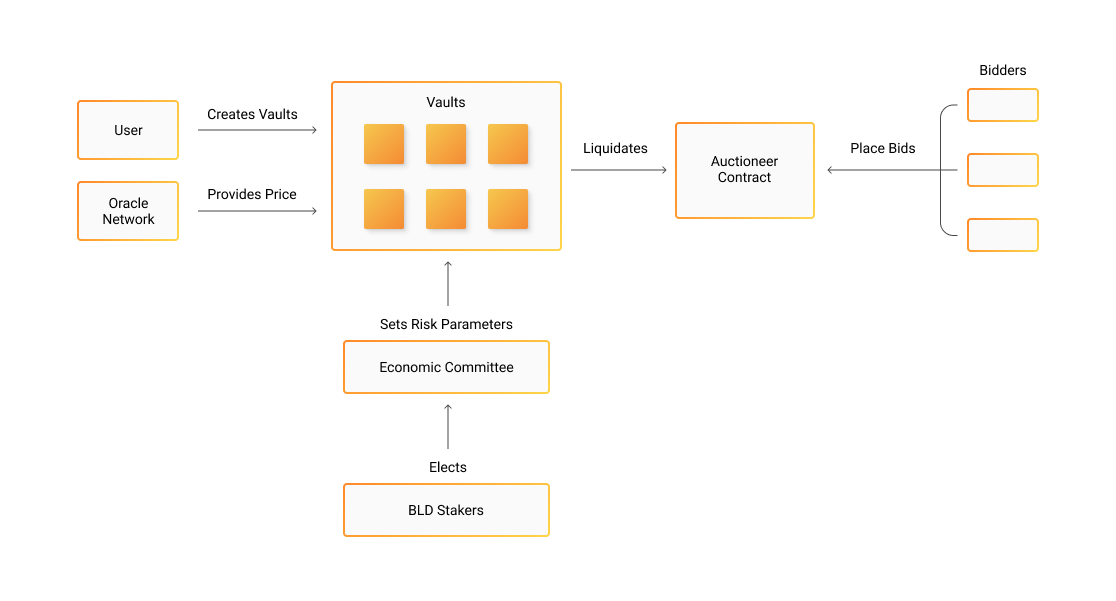Terms of Service
Overview
The initial launch of Liquidation Auctions comes in the form of a command-line-interface (CLI). Behind the scenes is a descending clock auction, which aggregates all liquidated collateral of a given type (like ATOM) and begins an auction. Any user can bid to purchase those assets, which can then be sold at market prices on external exchanges. Inter Protocol relies on a robust market of third-party bidding to ensure it earns near-market prices for its sales.
Key Features
Stay Alert with Live Auction Updates

Customize Your Bids with Ease

Modify and Cancel Bids with Flexibility

Monitor Your Bids and Purchases in Real-time

Behind The Scenes
After the price lock period (i.e. 1 hour - a governed parameter set by the Economic Committee), any vaults whose collateralization ratio is lower than their vault type’s liquidation ratio becomes liquidated. Vault users can similarly monitor their liquidation risk by tracking their vault’s ‘Liquidation Price’ in lieu of the system’s ‘Next Liquidation Price’.
The liquidated collateral is then transferred to the auctioneer contract. An auction begins with a starting price calculated at or above the current oracle price.
The auction ticks forward, stepping down the price until it has raised the target IST amount which covers the debt, or until the maximum discount is reached.
Since the vaults are over-collateralized - byt the end of auction, debt is normally covered with the possibility of excess collateral being returned to vault users less the liquidation penalty, ordered by highest to lowest vault collateralization ratio at time of liquidation. There are some exception flows where this may not be the case. See https://community.agoric.com/t/inter-protocol-vaults-contract-implementations/261/3 for a more detailed explanation of these.
Community Governed
Elected by Agoric BLD stakers, Inter Protocol’s Economic Committee is responsible for maintaining a cohort of Liquidation Auctions parameters to maintain a healthy system.

how often to start an auction

how often to reduce the price

how many steps before closing the auction

discount or markup for starting price in basis points

amount to reduce prices each time step in BP

time before each auction that prices are locked
Parts at Play
An overview of the system at work.
